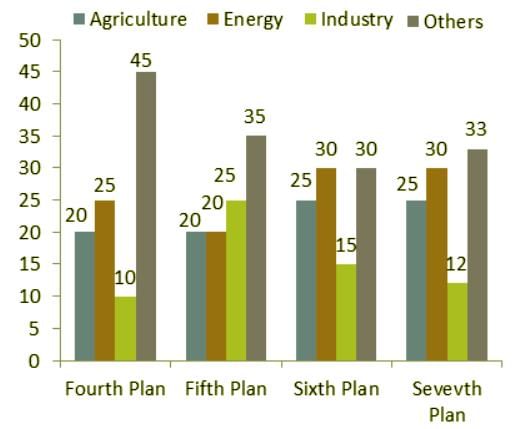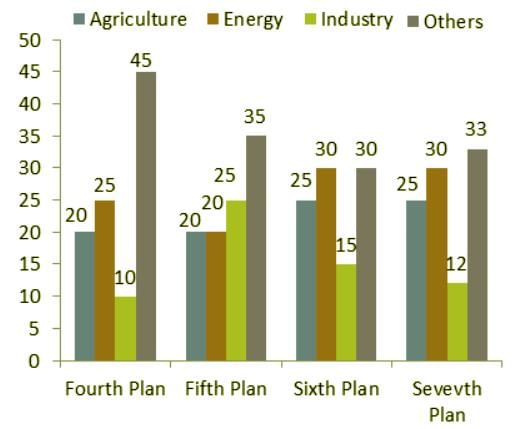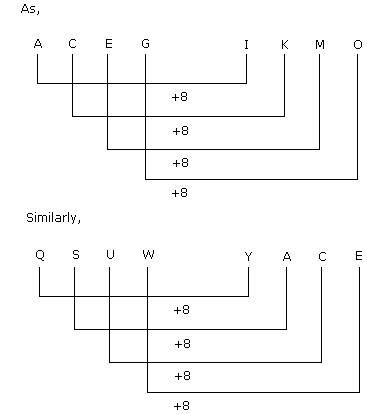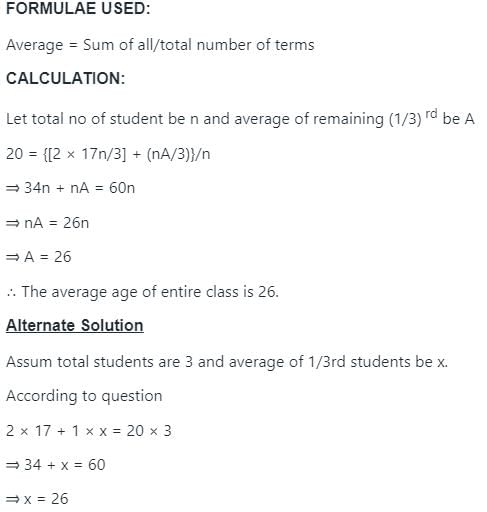CISF Head Constable Mock Test - 10 - CISF Head Constable MCQ
30 Questions MCQ Test CISF Head Constable Mock Test Series 2025 - CISF Head Constable Mock Test - 10
A major telecom company recently hired a new Chief Financial Officer to take command of the company’s finances. This move came against the backdrop of national and global economic crises.
The CFO is charged with the responsibility of realigning the finances of the largest Strategic Business Unit which deals with network solutions to major corporate clients in the country. In wake of the overall financial slump, many of the corporate clients have been delaying the payment of their recurring dues for the monthly network and internet services utilised. The local account managers handling those clients and their respective Regional Managers had been given the authority to maintain client relations and if necessary allow the delayed payments with a view to continue a long-term relationship with the key clients. However, the new CFO after taking stock of the situation decided to put an affirmative end to this practice. He sent a mail to every regional and local account manager asking them to discontinue services to the defaulting clients. In spite of such a strong communication, most major clients delayed the payments in the next month. As a response to this, the CFO resent his earlier mail asking for comments. In the next month, the single largest client defaulted on the payment and the regional manager promptly asked the technology company to terminate services to that client. The regional manger merely informed the client that the delay in payment was responsible for the termination of services and the service would be reconstituted on payment of the dues.
The client faced severe difficulties due to discontinuation of the internet and local network services. The CEO of that company wrote a scathing email to the Chairman of the telecom company.
The CEO pointed out the sudden, mishandled and improperly communicated decision and its severe impact on his company’s business. He pointed out that they were one of the largest clients of the telecom company. The CEO also hinted that his company would want to reconsider their future engagement. The Chairman decided to maintain the relations with that important client and yet protect his company’s image. He promptly restarted the network services and yet requested the client to clear the dues within a week and to avoid major delays especially in these times of crisis. The client replied to this communication, agreeing to the specified norms. However, the Chairman decided to severely reprimand the Regional Manager and suspended him for 2 weeks. He also severely questioned the CFO for his error. At the next board of directors meeting, there was support for the Chairman’s action in spite of protests by some senior directors who defended the CFO and the Regional Manager's actions.
Q. Assuming that the crisis continues, the future course of action by the Account managers and Regional managers would be:
The CFO is charged with the responsibility of realigning the finances of the largest Strategic Business Unit which deals with network solutions to major corporate clients in the country. In wake of the overall financial slump, many of the corporate clients have been delaying the payment of their recurring dues for the monthly network and internet services utilised. The local account managers handling those clients and their respective Regional Managers had been given the authority to maintain client relations and if necessary allow the delayed payments with a view to continue a long-term relationship with the key clients. However, the new CFO after taking stock of the situation decided to put an affirmative end to this practice. He sent a mail to every regional and local account manager asking them to discontinue services to the defaulting clients. In spite of such a strong communication, most major clients delayed the payments in the next month. As a response to this, the CFO resent his earlier mail asking for comments. In the next month, the single largest client defaulted on the payment and the regional manager promptly asked the technology company to terminate services to that client. The regional manger merely informed the client that the delay in payment was responsible for the termination of services and the service would be reconstituted on payment of the dues.
The client faced severe difficulties due to discontinuation of the internet and local network services. The CEO of that company wrote a scathing email to the Chairman of the telecom company.
The CEO pointed out the sudden, mishandled and improperly communicated decision and its severe impact on his company’s business. He pointed out that they were one of the largest clients of the telecom company. The CEO also hinted that his company would want to reconsider their future engagement. The Chairman decided to maintain the relations with that important client and yet protect his company’s image. He promptly restarted the network services and yet requested the client to clear the dues within a week and to avoid major delays especially in these times of crisis. The client replied to this communication, agreeing to the specified norms. However, the Chairman decided to severely reprimand the Regional Manager and suspended him for 2 weeks. He also severely questioned the CFO for his error. At the next board of directors meeting, there was support for the Chairman’s action in spite of protests by some senior directors who defended the CFO and the Regional Manager's actions.
In this following question, four words have been given, out of which three are alike in some manner and the fourth one is different. Choose out the odd one out.
In this following question, four words have been given, out of which three are alike in some manner and the fourth one is different. Choose out the odd one out.
Directions to Solve
In each of the following questions find out the alternative which will replace the question mark.
Question -
ACEG : IKMO :: QSUW : ?
Direction: In each question below is given a statement followed by two conclusions numbered I and II. You have to assume everything in the statement to be true, then consider the two conclusions together and decide which of them logically follows beyond a reasonable doubt from the information given in the statement.
Statements: In a one day cricket match, the total runs made by a team were 200. Out of these 160 runs were made by spinners.
Conclusions:
- 80% of the team consists of spinners.
- The opening batsmen were spinners.
Direction: In each question below is given a statement followed by two conclusions numbered I and II. You have to assume everything in the statement to be true, then consider the two conclusions together and decide which of them logically follows beyond a reasonable doubt from the information given in the statement.
Statement :Government has spoiled financial institutions by appointing bureaucrats as Directors.
Conclusions:
- Government should appoint Directors of the financial institutes taking into consideration the expertise of the person in the area of finance.
- The Director of the financial institute should have expertise commensurate with the financial work carried out by the institute.
Directions: Read the given information carefully and answer the questions given beside:
Nine persons – Chaya, Dimple, Beena, Ajit, Jaya, Fatima, Gagan, Hemant and Kaushal – are sitting in a straight line facing north, but not necessarily in the same order.
Beena is fourth to the left of Gagan; Fatima is fourth to the right of Chaya and second to the left of Kaushal, who is fifth to the right of Ajit. Dimple is not an immediate neighbour of either Kaushal or Beena. There are only three persons between Jaya and Ajit. Gagan is second to the right of Chaya.
Q. Who among the following sits third to the right of Hemant?
Direction : Study the following question carefully and choose the right answer.
Q: In a particular way the word STAG is coded as HGZT, HORN as SLIM. Using the same coding, how can NORTH be written?
The average marks of a class of 48 students is 35. Of them, two score zero, of the rest, the first 30 scored an average of 40, the next fourteen scored an average of 20. If the remaining two scored equal marks, what are their individual marks?
The average age of 2/3rd of the class is 17. What should be the average the age of the remaining l/3rd students so that the average age of the entire class is 20?
A certain number of two digits is three times the sum of its digits. If 45 is added to it, the digits are reversed. The number is _______
A man spends 60% of his income. His income is increased by 20% and his expenditure also increases by 10%. Find the percentage decrease in his saving?
A is working and B is the sleeping partner in a business. A invests Rs. 12,000 and B invests Rs. 20,000. A receives 10% of the profit for managing. The rest is divided in the ratio of their capitals. Out of a total profit of Rs. 9600, what will be the amount received by A?
Ratio between the lateral surface area and the total surface area of a right circular cylinder is 3 : 5. If the lateral surface area is 1848 sq. m, then volume of the cylinder is (in cubic m).
The given rectangle ABCD has length 9 and width 5. Diagonal AC is divided into 5 equal parts at W, X, Y and Z. Find the area of the shaded region.

Directions: Study the following bar chart carefully and answer the questions given beside.
Public Sector Outlay (in percentage) of different sectors is given below.

Q. In the seventh plan, the amount spent towards Industry was Rs. 26,400 crores. What was the amount spent towards Transport and Communication, if it was 40% of ‘others’?(in Rs. crores)
Directions: Study the following bar chart carefully and answer the questions given beside.
Public Sector Outlay (in percentage) of different sectors is given below.

Q. Public sector outlay was Rs. 40,000 crores in the fifth plan and around Rs.1 lakh crores in the sixth plan. What is the percentage increase in the amount spent towards Energy sector from the fifth plan to the sixth plan?
Find out the Synonym of the following word:
WARRIOR
Find out the Synonym of the following word:
DISTANT
Read the each sentence to find out whether there is any grammatical error in it. The error, if any will be in one part of the sentence. The letter of that part is the answer. If there is no error, the answer is 'D'. (Ignore the errors of punctuation, if any).
In the following questions four alternatives are given for the idiom/phrase italicised and underlined in the sentence. Choose the alternative which best expresses the meaning of idiom/phrase.
Q. The popularity of the yesterday's superstar is on the wane.
Each species has its special place or habitat. An (31)____ bird watcher can look at (32)____forest, meadow, lake , swamp or field and (33)____ almost exactly what birds he (34)____find there (35)____birds are found all over the world; others (36)____ themselves to certain areas. Still (37)____migrate from one country to another in (38)____in search of warmth and (39)____, and then return in spring,(40)____the season is more favourable.
Q. Find the word most appropriate for Blank No. 31
The beginning of the show always brought in lots of money, yet the average singerended the show with a decrease in what their tip may be.
Direction: In the questions given below a sentence is given with two blanks in each. Corresponding to each question two columns are given with three words in each column. Which combination of words from the two columns will perfectly fit into the blanks to make the sentence contextually correct and meaningful?
Taking a cue from these complaints, the National Human Rights Commission had ____________ a draft of patients’ rights charter with the Ministry and it was ____________ at the 11th meeting of the National Council of Clinical Establishments.

Directions: Read the passage and answer the questions that follow:
Paragraph 1: The government has announced a list of ‘Institutes of Eminence’ (IoE) among India’s institutions of higher education. This was awaited for the simple reason that finding a place on it would save an educational institution from the clutches of a dreaded regulator. Regulators are meant to ensure that we have a socially desirable outcome, but in the case of higher education in India the opposite seems to have been the case. The University Grants Commission (UGC) has over half a century micro-managed this space to an unimaginable level of silliness. The result has been publicly-funded universities that are cavernous wastes, shattering the aspirations of our youth and producing low-level ‘knowledge’. Evidence of the role of India’s higher-education regulator may be seen in the feature that the few instances when this is not the case the institutions have enjoyed privilege that leaves them protected from its depredations.
Paragraph 2: The latest offering is in the form of a proposed Higher Education Commission of India (HECI). The intention is to leave the HECI to focus on quality while leaving funding of public institutions to the Ministry of Human Resource Development (MHRD). Even as we observe the progress of the HECI and wonder if it is going to be any more than old wine in a new bottle, we already have an inkling of what could go wrong. This springs from the government’s announcement of a list of IoEs. The government has chosen three public and three private institutions for this status. The public institutions are the Indian Institute of Science, Bengaluru, and the Indian Institutes of Technology at Delhi and Mumbai. The private ones are the Birla Institute of Technology and Science Pilani, the JIO Institute and the Manipal Academy of Higher Education. This list suffers from a serious lack of credibility. Where in it are the universities of India? We understand that the government’s aim is to rectify the low presence of Indian institutions in the global rankings of universities.
Paragraph 3: While the early European universities may have started as academies of the arts they were soon to have medicine and astronomy as areas that they pursued with vigour. Somewhere along the line we seem to have lost this breadth and come to revel in a landscape dominated by engineering schools. These engineering schools, notably the IITs, have done us proud but cannot be equated with the great universities of the world for the simple reason that they are focussed on a narrow domain. Also, if the idea behind IoEs is that they will be left alone and given enhanced financial support, it must be acknowledged that until very recently the IITs have not been meddled with neither have they been starved of resources. The IISc is of course broader than the IITs but does not embrace the social sciences and the humanities, the presence of which would be considered necessary for a university.
Paragraph 4 : If a list of eminent institutions in the country is at all needed, the absence of the Jawaharlal Nehru University (JNU) from the first list of IoEs is striking. Its faculty has brought many of the world’s leading ideas to Indian students and in at least area came close to building a new school of thought, however controversial. It is not as if similar efforts in the social sciences have not occurred elsewhere in India but JNU has perhaps sustained its reputation as a university for longer. It already had schools of Computer Science and the Life Sciences over four decades ago when these were fledgling disciplines giving it a certain breadth early on.
Paragraph 5 : Even as we may wonder at the exclusion of JNU from the list of IoEs released by the government one might wonder at how the private institutions that are on it made the cut. While BITS Pilani may have made a significant contribution to the country at a time when it desperately needed engineers, but is yet not what may be considered a university, the presence of the two others on the list leave one nonplussed. One of them, we are told, has been conferred the status on grounds of its promise, a dubious position to take as this institute has little to show except for the financial heft that will surely undergird it. The other is known largely for its association with the practice of charging capitation fees for education.
Q. Which of the following may be inferred from paragraph 3?
I. Universities should embody knowledge across a wide range of disciplines.
II. There is an emphasis on a depth of knowledge across a broad horizon in Indian Universities today.
III. In India, a lot of focus is given to Institutions which are focused on only few areas.
Directions: Out of the given alternatives, choose the one which can be substituted for the given words/sentence.
A disease that spreads over a large area:
A body moving in a circular path with a constant speed has a -
Where was India's first 'Police Drone Unit' launched?
How much financing has the World Bank approved to support India's low-carbon transition?



























